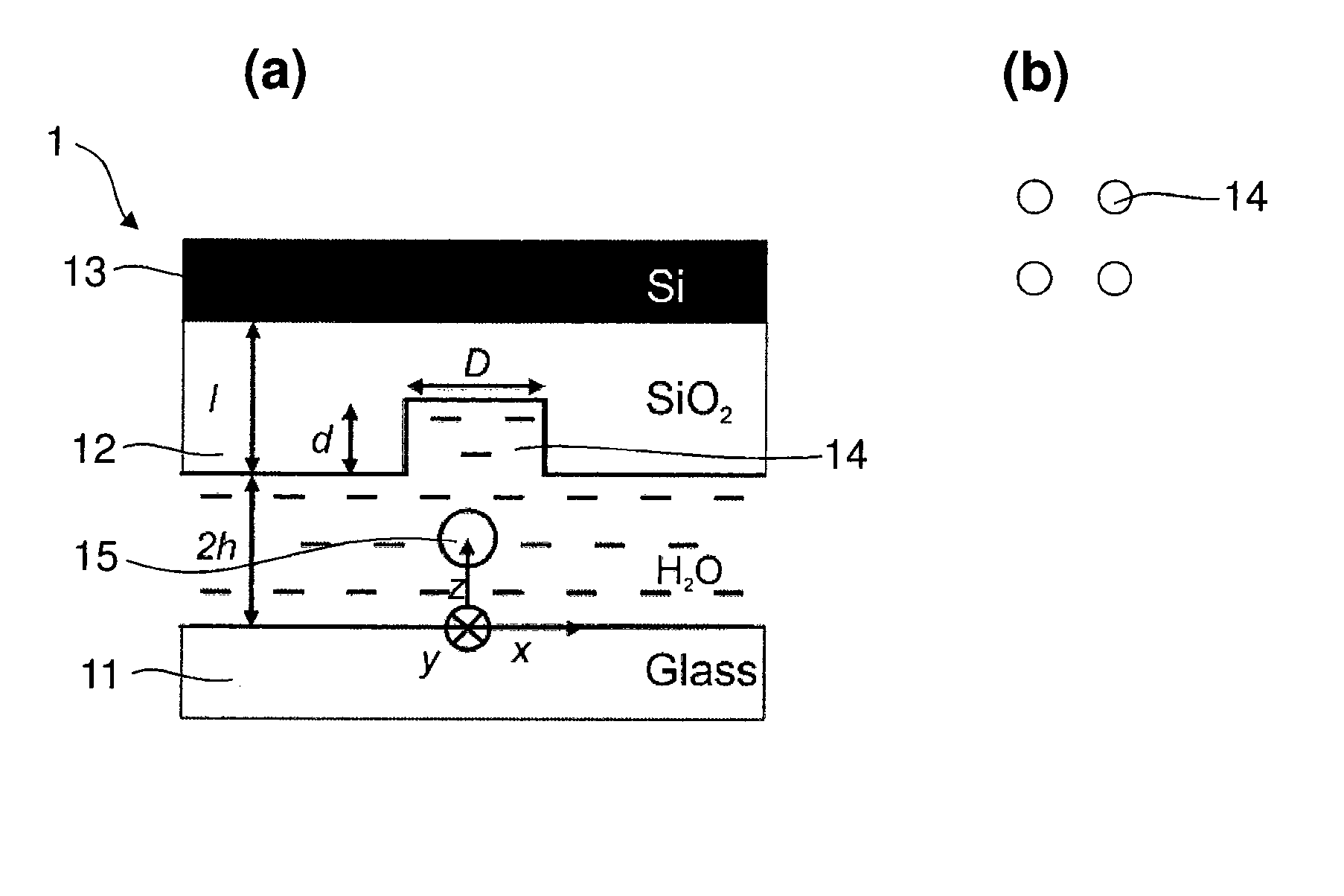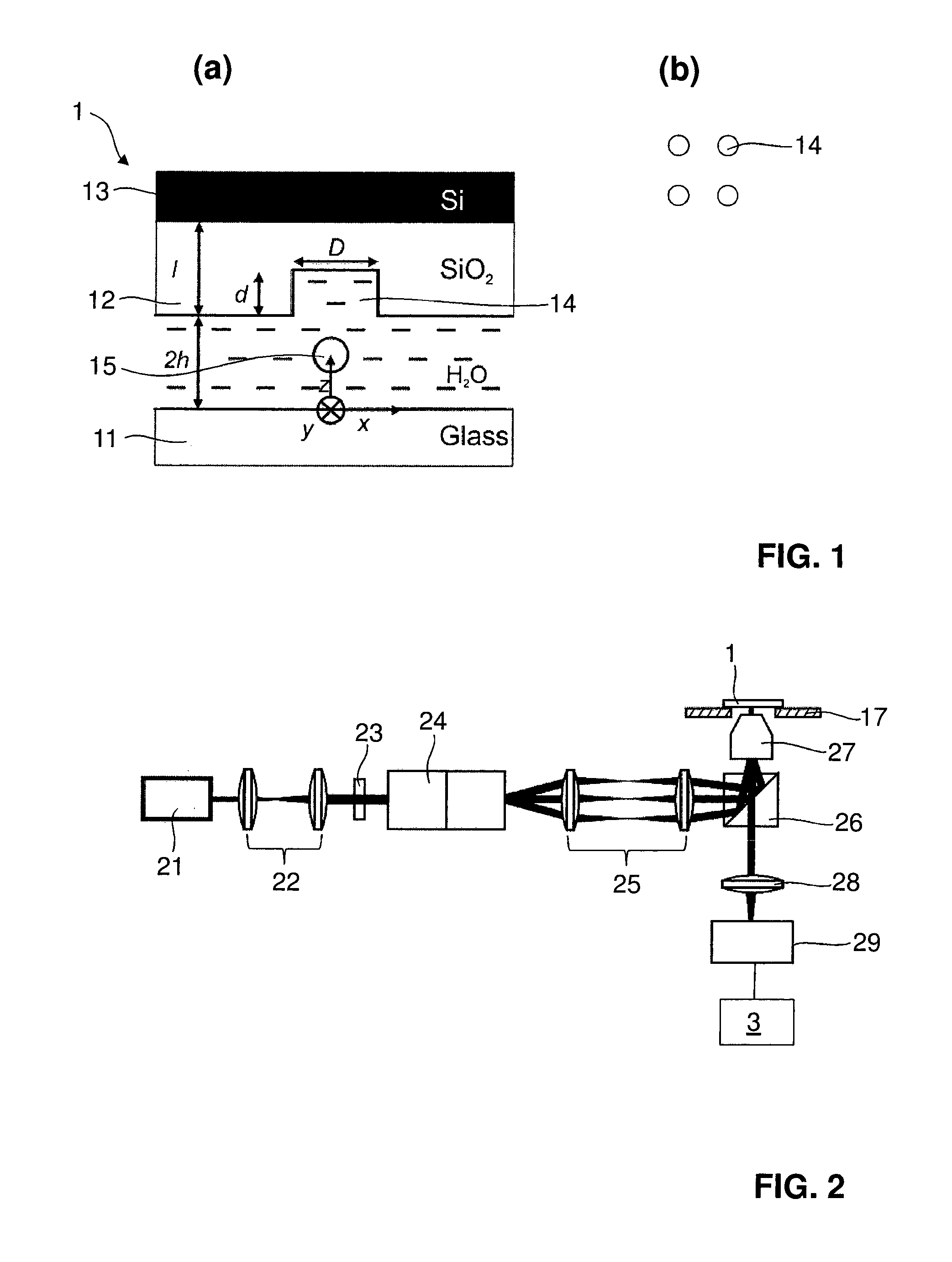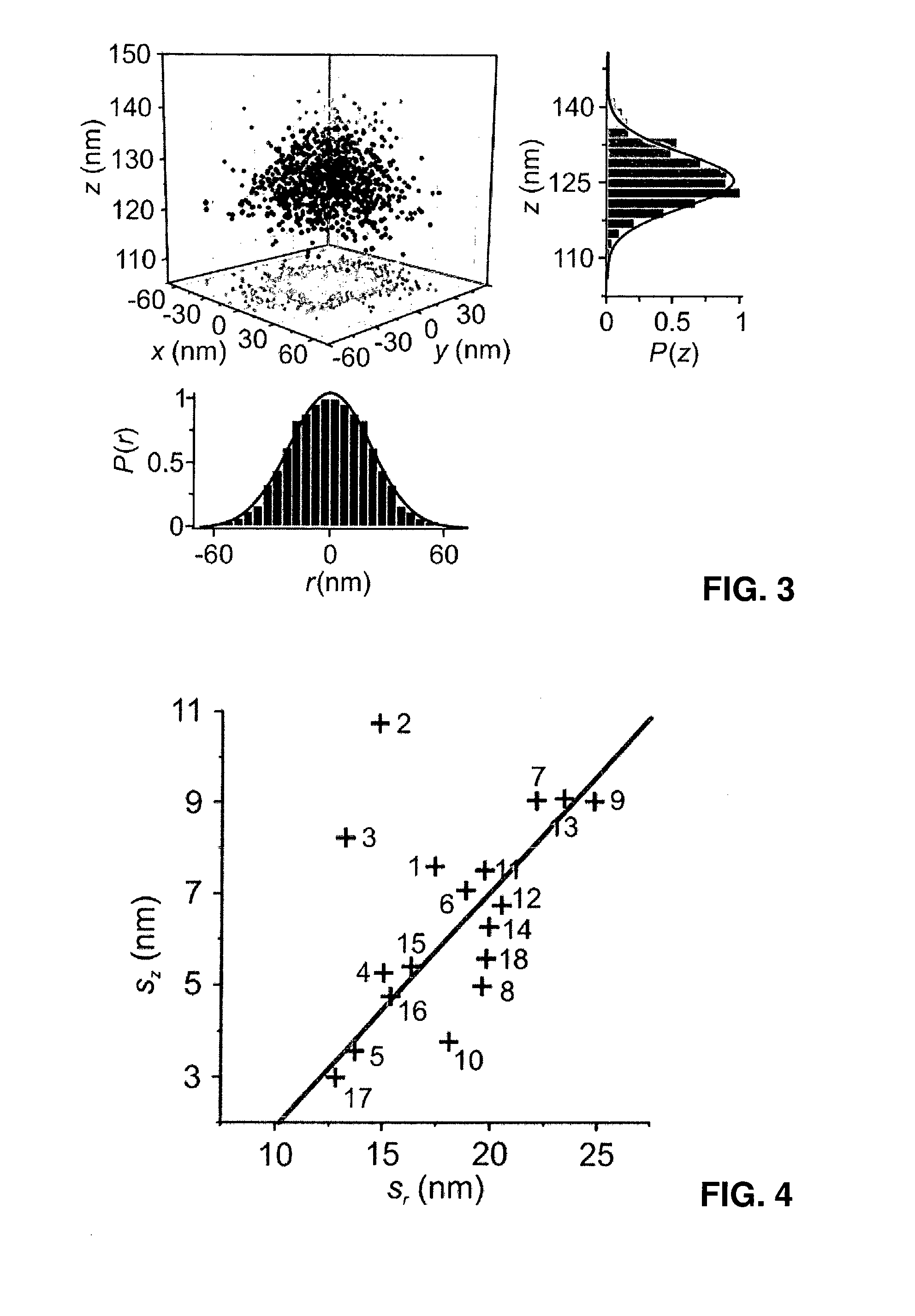Method and apparatus for measuring charge and size of single objects in a fluid
a single object and fluid technology, applied in chemical methods analysis, instruments, nanoparticle analysis, etc., can solve the problems of complex instrumentation, low sensitivity to low concentrations of oligomers and thermodynamic non-idealities arising from interparticle interactions, and difficult to paralleliz
- Summary
- Abstract
- Description
- Claims
- Application Information
AI Technical Summary
Benefits of technology
Problems solved by technology
Method used
Image
Examples
Embodiment Construction
[0058]FIG. 1(a) illustrates the setup of a single electrostatic trap 1, and FIG. 1(b) illustrates a possible arrangement of traps in an array. An array of such traps was fabricated by lithographically patterning the surface of a −400 nm deep silicon dioxide layer 12 on a p-type silicon substrate 13 and subsequent wet-etching the silicon dioxide layer 12 to a depth of 2 h≈200 nm in buffered HF (Ammonium fluoride-HF mixture, Sigma-Aldrich). The floors of these trenches were then patterned with submicron-scale features such as cylindrical pockets 14 having a pocket diameter D using electron beam lithography and subsequent reactive ion etching of the silicon dioxide to a pocket depth of d=100 nm. A fluidic device with fully functional fluidic slits having a depth 2 h of approximately 200 nm and a width of 20 micrometers was obtained by irreversibly bonding the processed silicon dioxide-silicon substrates with a glass substrate 11 compatible with high-NA microscopy (PlanOptik, AG) using ...
PUM
| Property | Measurement | Unit |
|---|---|---|
| size | aaaaa | aaaaa |
| size | aaaaa | aaaaa |
| time resolution | aaaaa | aaaaa |
Abstract
Description
Claims
Application Information
 Login to View More
Login to View More - R&D
- Intellectual Property
- Life Sciences
- Materials
- Tech Scout
- Unparalleled Data Quality
- Higher Quality Content
- 60% Fewer Hallucinations
Browse by: Latest US Patents, China's latest patents, Technical Efficacy Thesaurus, Application Domain, Technology Topic, Popular Technical Reports.
© 2025 PatSnap. All rights reserved.Legal|Privacy policy|Modern Slavery Act Transparency Statement|Sitemap|About US| Contact US: help@patsnap.com



